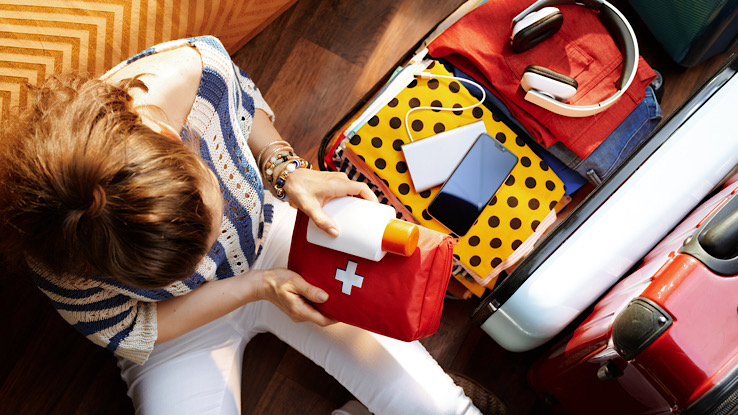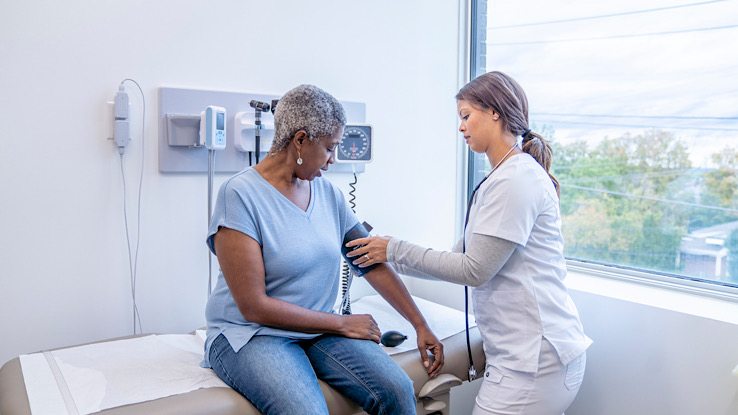Essentials for Your Travel First Aid Kit

As you prepare for your next adventure, what are the must-have items that make it onto your packing list? Undoubtedly, you’ll want to include your favorite outfits and comfortable footwear. Toiletries are a given, along with those cherished skincare essentials. However, have you considered the importance of packing a first aid kit for any unexpected situations that may arise during your journey?
Most people don’t think about bringing a first aid kit on trips, but they can be very helpful in an emergency. So, before you head off on that next vacation, let’s look at some essentials you should have in a travel first aid kit.
Why You Need a Travel First Aid Kit

Having a travel first aid kit in your carry-on bag or your car for a road trip can help you handle any small injuries or wounds. You don’t need every single item in your medicine cabinet, but it is nice to have a small bag of essentials just in case.
It is convenient to reach into a small first aid kit when you have a cut, bruise, or slight illness. There is also a risk that you will be somewhere where you cannot access a pharmacy or get immediate medical help. You may also need specific medication for your own health that you may not be able to get in another area or country.
What to Put In a Travel First Aid Kit
It will help if you use a small zipped bag or small tackle box for your travel first aid kit that you can easily access.
A few essential items to include in the kit are:
- Antibacterial wipes and creams
- Gauze
- Tweezers
- Adhesive tape
- Scissors
- Antibiotic creams (or hydrogen peroxide) for cuts
Pack different sizes of bandages in case of cuts or blisters. Depending on where you are going, other items to pack include are:
- Insect repellent
- Sunscreen (SPF15 or higher)
- Hand sanitizer
- Your health insurance card.
Include medications that you regularly take at home. In fact, you may want to pack enough medicine for the trip plus a bit extra in case your trip is extended for some reason. You can also include some over-the-counter medicines like ibuprofen or motion sickness pills in cases of headaches or nausea. Be sure to keep this medication in the original packaging so that travel officials can easily identify it.
General Items for Skin Problems
You may want to include a few items in your travel first aid kit if you face skin problems while out, like cuts or poison ivy.
- Bandages
- Gauze
- Antibiotic ointments
These can be especially helpful if you are camping, hiking, or doing other activities in nature. Another item you may want to include in this kit is calamine lotion, just in case you develop some nasty, itchy rash. You may want to have aloe vera gel and medical tape.
Items for Stomach Problems
You also want to be prepared in case of any stomach issues that may come up during a trip. No one wants to really think about it, but bloating, gas, and other stomach issues can occur on trips. You may eat something while in another state or country that doesn’t sit well with your stomach, and it would be nice to be prepared for that situation.
With your travel first aid kit, you should include motion sickness or nausea medication in case you suffer from those issues on a plane, boat, or in the car. You may want to include antacids in case you suffer from heartburn.
Items for Respiratory Problems
When creating a first aid kit for your travels, it’s important to consider potential respiratory issues. Your first aid kit should have some antihistamine medicine or EpiPens in case of odd allergies.
For those who suffer from respiratory issues like asthma, or allergies, you want to make sure you have your standard medicine or equipment to handle those issues. For example, having your inhaler (or two) is a must for those who suffer even from mild asthma. You never know when you may have an attack.
What To Do Before Your Trip

Before you even go on your trip, you want to take proper steps to stay healthy and safe. Beyond having a travel first aid kit:
- Be sure you are up-to-date with your doctor appointments and routine vaccines before traveling (especially if you are going abroad).
- Research if your health insurance covers medical care for international trips. If not, plan to get additional travel insurance in case you get sick or injured.
- Leave copies of important travel documents, including your itineraries, contact information, and passport, with someone back home.
- Have a list of emergency contacts on you at all times.
Make Your Own or Buy a Travel First Kit
If you do not want to create your own first aid kit, you can also buy one! There are different organizations and retailers that offer ready-made kits. The Red Cross offers several different kits, including one with some essential items for emergencies. Amazon also has several different kits available for purchase. If you decide to buy or create your own travel first aid kit, you also want to check the expiration date on any products you’ve included. Replace any old items as soon as possible before you leave.






